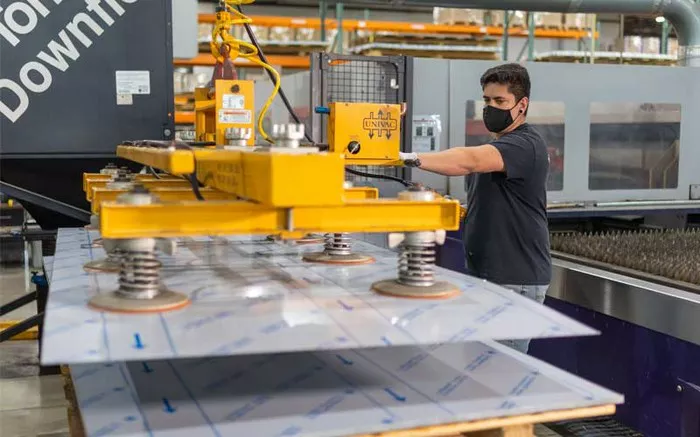Canadian boat manufacturer Kingfisher Boats, known for its durable welded aluminum hulls since 1959, has successfully modernized its production process using JetCAM Expert CAD/CAM software. The company has optimized its nesting and CNC programming workflow, improving material efficiency and cutting times—crucial in an era of volatile aluminum prices.
In 2008, Kingfisher introduced JetCAM Expert to drive an ESAB plasma cutter. By 2015 and 2017, the company expanded its setup with two Multicam router posts. The ESAB cutter was officially phased out in 2024, reflecting the company’s continued evolution toward more efficient and advanced manufacturing practices.
Smooth Transition to Software Management
In January 2024, Bob Hackl, a former CNC router operator, transitioned into managing JetCAM software operations, despite limited prior experience with CAD/CAM or nesting tools. He quickly adapted, thanks to JetCAM’s intuitive interface. “I found it very easy to learn the basics of JetCAM,” Hackl said.
Using JetCAM’s Single Component Automatic Processing (SCAP), Hackl imports DWG files effortlessly. By setting the source, destination, and material thickness, the software automates part tooling and nesting, saving considerable time and labor. JetCAM’s design enables parts to be pre-tooled for multiple machines, ensuring rapid deployment for nesting and NC code generation across different routers.
Automated Tooling and Flexible Nesting Strategies
JetCAM’s Automatic Tooling feature handles complex routing operations without user input—covering multi-depth routing, scribing, partial depth cutting, and corner pocketing. “You configure it once, and JetCAM handles the rest,” Hackl explained.
The company also makes strategic use of High-Performance Nesting (HPN), particularly amid fluctuating raw material costs that saw aluminum prices soar from $1,600 to over $4,000 per tonne between 2020 and 2022. HPN allows Kingfisher to balance between speed and nesting efficiency. Although the system defaults to a five-minute run time, Hackl often stops the process in under three minutes due to early optimization.
Static and Dynamic Nesting: A Competitive Advantage
Kingfisher leverages both static and dynamic nesting methods. Static nests, created with HPN, are used for frequently repeated parts to ensure optimal material utilization. When production needs shift—such as reordering scrapped components or mixing new parts—dynamic nesting is deployed seamlessly.
“We generally static nest,” Hackl noted, “but if we need to respond to changes, it’s no problem to dynamically nest on the fly.”
Training and Support: Key to Success
JetCAM’s online university played a key role in Hackl’s rapid onboarding. With over 90 tutorial videos under his belt, he praised the platform’s clarity and depth. In addition, local support from reseller NestOne Solutions has been invaluable. “They’ve answered every question quickly and thoroughly,” said Hackl.
Looking Ahead with Confidence
With more than seven decades of manufacturing excellence, Kingfisher Boats is confident that JetCAM remains a crucial component of its continued growth. “JetCAM is easy to learn, powerful, and well-supported,” concluded Hackl. “I’ve never had a problem that JetCAM couldn’t help me solve.”
As Kingfisher continues to navigate a competitive global market, advanced software like JetCAM ensures the company remains agile, efficient, and future-ready.
Related topics:

